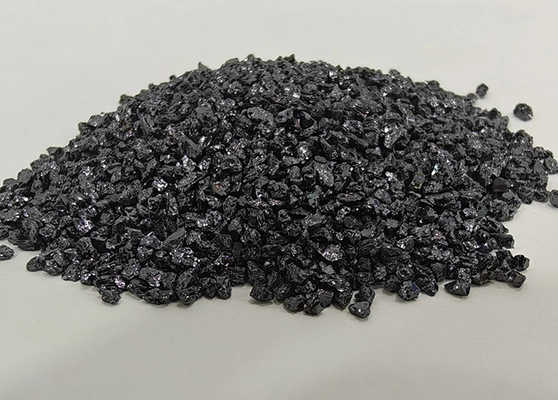Quick Answer: Boron is classified as a metalloid, meaning it has properties of both metals and non-metals. It is hard, brittle, and a poor conductor at room temperature (like a non-metal), but it can conduct electricity at high temperatures and forms alloys (like a metal). This dual nature makes boron essential in materials science, semiconductors, glass, and abrasives.
What is Boron?
Boron (chemical symbol B, atomic number 5) is a chemical element found in group 13 of the periodic table. It is relatively rare in the Earth's crust, usually occurring in compounds such as borax, boric acid, and colemanite. In its pure form, boron is a dark, amorphous powder or a crystalline solid with a black, lustrous appearance.
Metal, Non-Metal, or Metalloid?
Boron is officially classified as a metalloid, also called a semimetal. Metalloids are elements that exhibit characteristics of both metals and non-metals, depending on conditions.
- Non-metal-like: Brittle, poor electrical conductor at room temperature, high ionization energy.
- Metal-like: Conductive at high temperature, forms metallic alloys, adds hardness and strength.
Other metalloids include silicon, arsenic, antimony, and tellurium.
Physical Properties of Boron
- Appearance: Black or brown crystalline solid
- Hardness: Extremely hard (comparable to corundum and silicon carbide)
- Density: ~2.34 g/cm³
- Melting point: ~2076 °C
- Electrical conductivity: Poor at room temperature, improves at high temperature
Chemical Properties of Boron
- Forms covalent bonds like non-metals.
- Does not form a simple cation (B³⁺ is unstable).
- Combines with oxygen to form boron oxides and borates.
- Reacts with metals to form stable borides.
Comparison with Metals and Non-Metals
| Property | Boron | Metals | Non-Metals |
|---|---|---|---|
| Appearance | Black, crystalline | Shiny, metallic | Dull, varied colors |
| Hardness | Very hard, brittle | Malleable, ductile | Brittle |
| Conductivity | Poor at RT, better at high T | Good conductor | Poor conductor |
| Chemical bonding | Covalent, forms borides | Metallic bonds | Covalent bonds |
Applications of Boron
Boron’s hybrid nature gives it unique applications:
- Glass and Ceramics: Borosilicate glass (Pyrex) with high thermal resistance.
- Abrasives: Boron carbide (B₄C), one of the hardest known materials, used in grinding, polishing, and armor.
- Semiconductors: Boron is used as a dopant in silicon wafers for electronics.
- Alloys: Small additions of boron improve steel hardness and toughness.
- Neutron absorbers: Boron is used in nuclear reactors as control rods (boron-10 isotope).
- Agriculture: Boron compounds are micronutrients essential for plant growth.
FAQs
Why is boron called a metalloid?
Because it shows mixed properties of metals (conductivity at high temperature, alloy formation) and non-metals (brittleness, covalent bonding).
Is boron used in abrasives?
Yes. Boron carbide (B₄C) is one of the hardest abrasives, used for grinding wheels, blasting nozzles, and armor plating.
Can boron conduct electricity?
Boron is a poor conductor at room temperature but can conduct at high temperatures, showing semiconductor behavior.
References
- Periodic Table – Classification of Metalloids
- ASM Handbook, Volume 2: Properties of Boron and Boron Compounds
- Chemical Society Reviews: Applications of Boron in Materials Science
